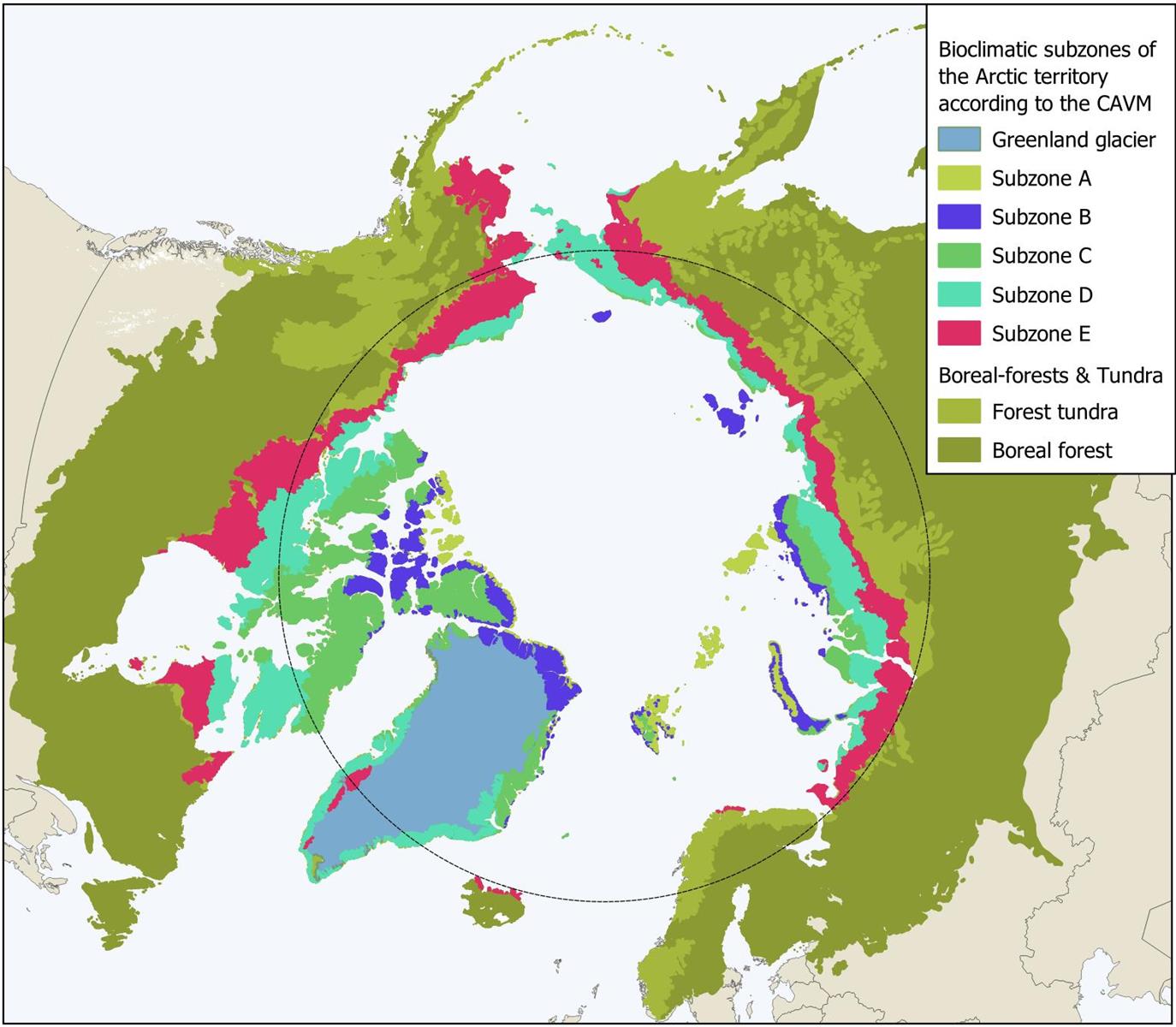
Map: Bioclimatic subzones, boreal forests and forest tundra.
- Bioclimatology: branch of climatology that deals with the effects of the physical environment on living organisms over an extended period of time.
- Boreal forest or Taiga: a biome characterized by coniferous forests consisting mostly of pines, spruces, and larches.
- Forest tundra: Areas of transition from forested to non-forested landscapes. At high latitudes, north of the main zone of boreal forestland, growing conditions are not adequate to maintain a continuously closed forest cover, so tree cover is both sparse and discontinuous.
You can use the map freely, provided that the sources are credited.
Sources
Bioclimatic subzones
1. Subzone A (Coldest, High Arctic)
- Summer Warmth Index (SWI): < 6°C (sum of mean monthly temperatures > 0°C).
- Growing Season: Very short (1–2 months).
- Vegetation: Sparse, dominated by cryptogams (lichens, mosses), cushion plants, and bare ground.
- Example: Northern Greenland, central Arctic Ocean ice margins.
2. Subzone B (High Arctic)
- SWI: 6–9°C.
- Growing Season: Slightly longer than Subzone A, but still limited.
- Vegetation: Low-growing vascular plants (e.g., Arctic poppy, saxifrages), lichens.
- Example: Northern Svalbard, Canadian High Arctic.
3. Subzone C (Middle Arctic)
- SWI: 9–12°C.
- Growing Season: Moderate (2–3 months).
- Vegetation: Dwarf shrubs (e.g., Arctic willow, Dryas), grasses, sedges.
- Example: Northern Alaska, central Nunavut.
4. Subzone D (Low Arctic)
- SWI: 12–20°C.
- Growing Season: Longer (3–4 months).
- Vegetation: Continuous tundra with taller shrubs (e.g., birch, willow), moss/lichen understory.
- Example: Northern Scandinavia, Siberian tundra.
5. Subzone E (Warmest, Subarctic)
- SWI: > 20°C.
- Growing Season: Longest ( >4 months).
- Vegetation: Transition to boreal forest (taiga); dense shrubs, scattered trees (e.g., spruce, larch).
- Example: Southern Yamal (Russia), Labrador (Canada).